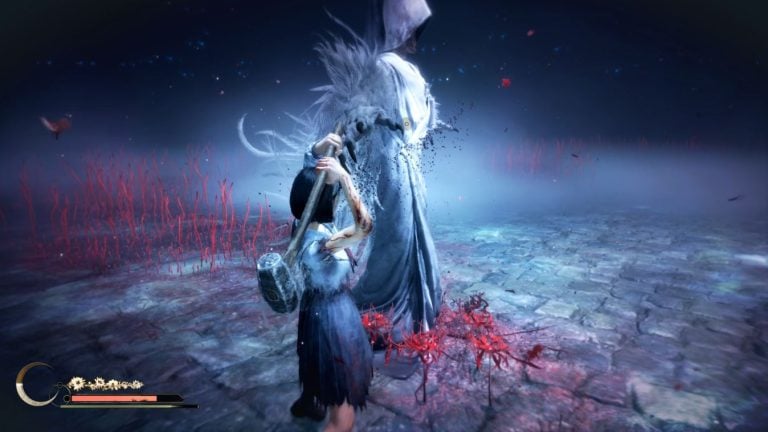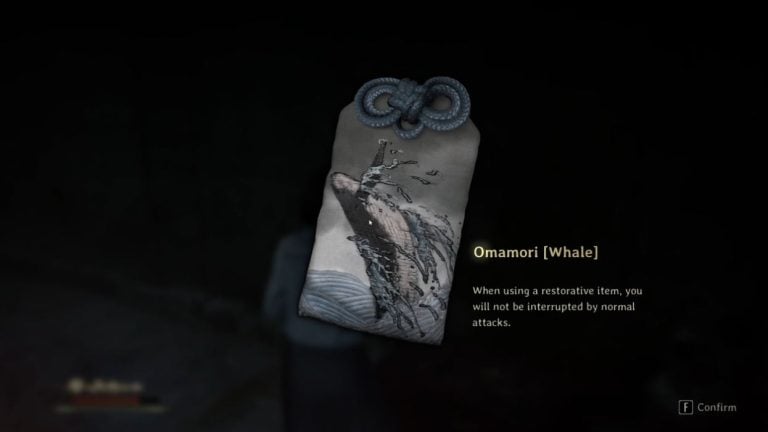Publication date of the original Japanese article: 2020-06-02 18:27 (JST)
Translated by. Ari Clark
Umurangi Generation is a photography simulator from Origame Digital and PLAYISM, now available for Steam. It’s a game about taking photographs to earn rewards while wandering around various locations.
In real life, I actually do earn a living taking photos as a dance photographer. This game may be a work of fantasy where you snapshot your way through a ruined world, but it’s packed with a surprising number of elements that made me, as a photographer, think, “Yeah, exactly!” So, without further ado, allow me to present 10 things about photography that I think Umurangi Generation gets exactly right.
*Disclosure: The publisher PLAYISM is part of Active Gaming Media, which is also the owner of this website.
The importance of “just one more step”
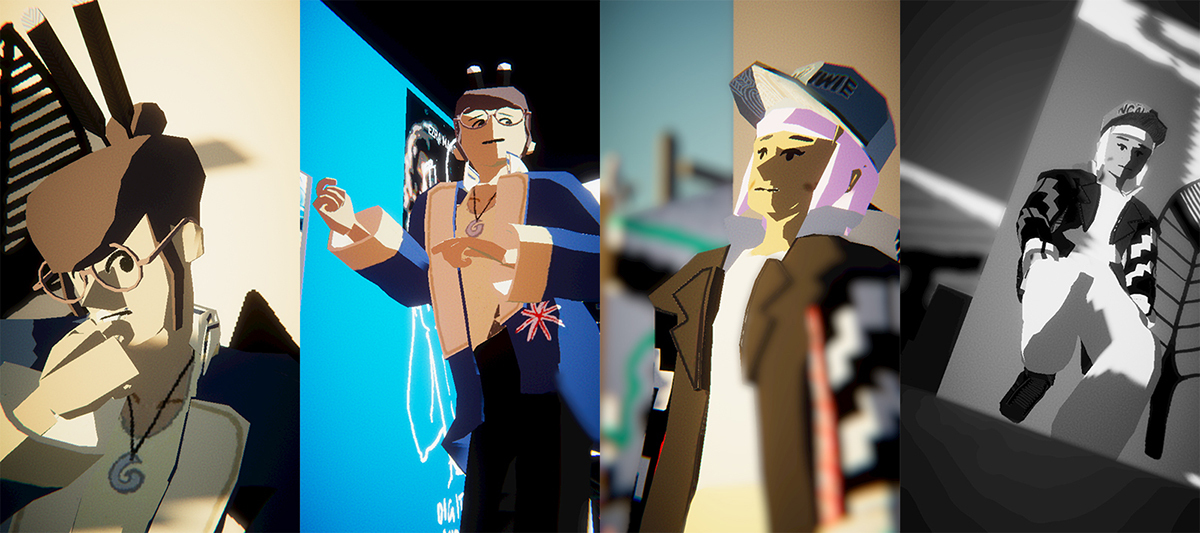
In Umurangi Generation, players actually walk around the stages to search for photographic subjects, peer through the viewfinder, and click the shutter. There’s no free-floating camera that can be repositioned however you want, like in the “photo modes” found in many games; photographs can only be taken from the place where you’re actually standing on your own two feet.
Even when you’re photographing the same subject, the impression produced by your photo changes depending on whether you’re looking up or looking down at them, and even a single step in any given direction can completely change the onscreen composition of what you’re trying (or not trying) to capture. The importance of using your feet to shuffle around looking for the best possible location to shoot from, and the feeling that the photo could turn out even better if you took just one more step, are both found throughout real-life photography as well.
A flash of inspiration, glimpsed through the viewfinder
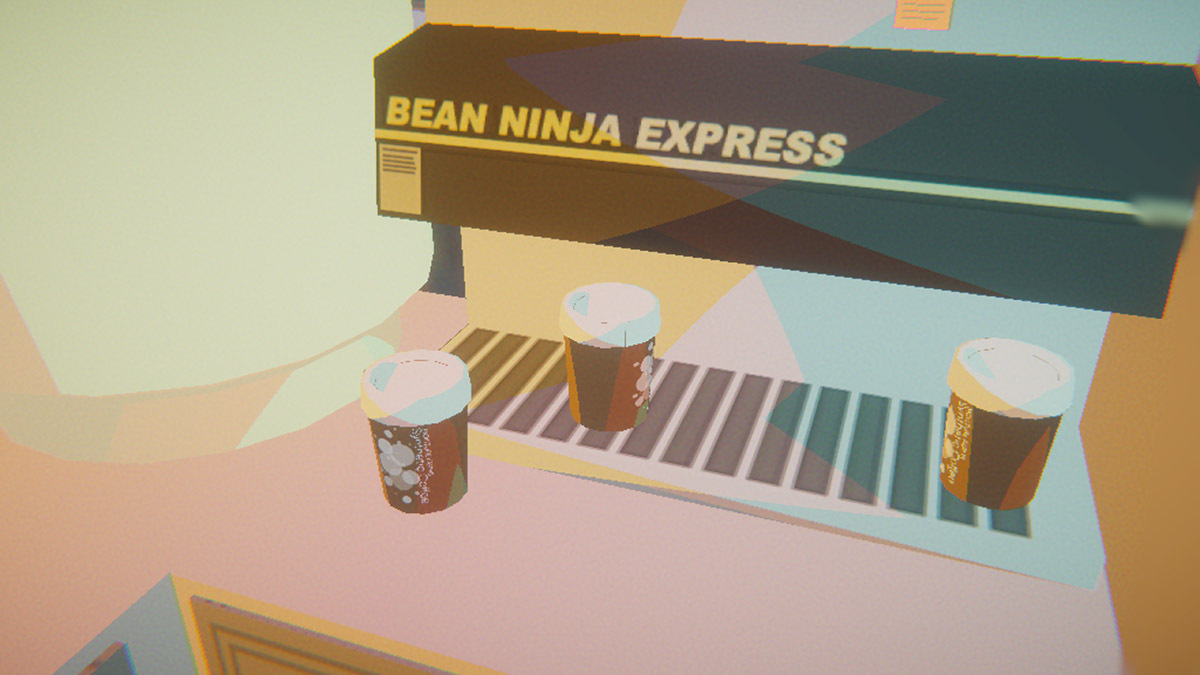
It’s not something that you might think about much in your everyday life, but some things simply look more appealing when you’re looking at them through a viewfinder. In this game, there’s a realistic difference between the hazy appearance of the scenery (the way the world looks without a camera lens) and the way the world looks through a camera lens. The fun of being suddenly inspired by something you saw while peering through your viewfinder, and of finding a whole new world inside the scene you expected to see, is just one of the joys that you’re unlikely to experience in “photo modes” that process game screenshots strictly according to the player’s intentions.
Shooting with different kinds of swappable lenses
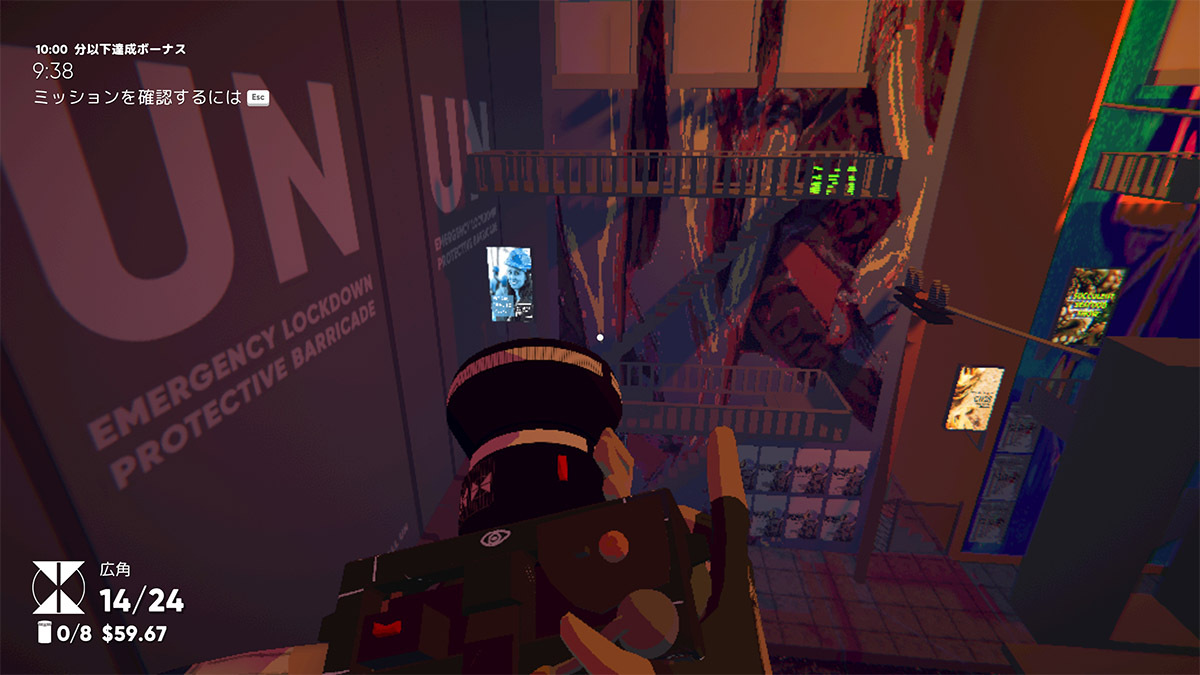
One of the characteristic features of a single-lens reflex camera is the ability to swap out its lenses. If you change the lens, you can get a photo with a whole different feel to it, even when you’re still shooting from the same position. Each lens has its own strengths and weaknesses, and in Umurangi Generation, you can change the things you can photograph and the atmosphere of the photo by swapping your lenses.
If you practiced with deliberately self-imposed rules like “don’t change the lens”, you could probably grasp the characteristics of each lens pretty quickly. You start off in-game with a standard zoom lens as your starting equipment, and unlock new equipment a little at a time by completing the challenges that go with each lens as you advance through the game. Because of this, even if you consider yourself completely clueless when it comes to lenses, you should be able to gradually figure it out.
Tiny movements can spoil everything with a telephoto lens
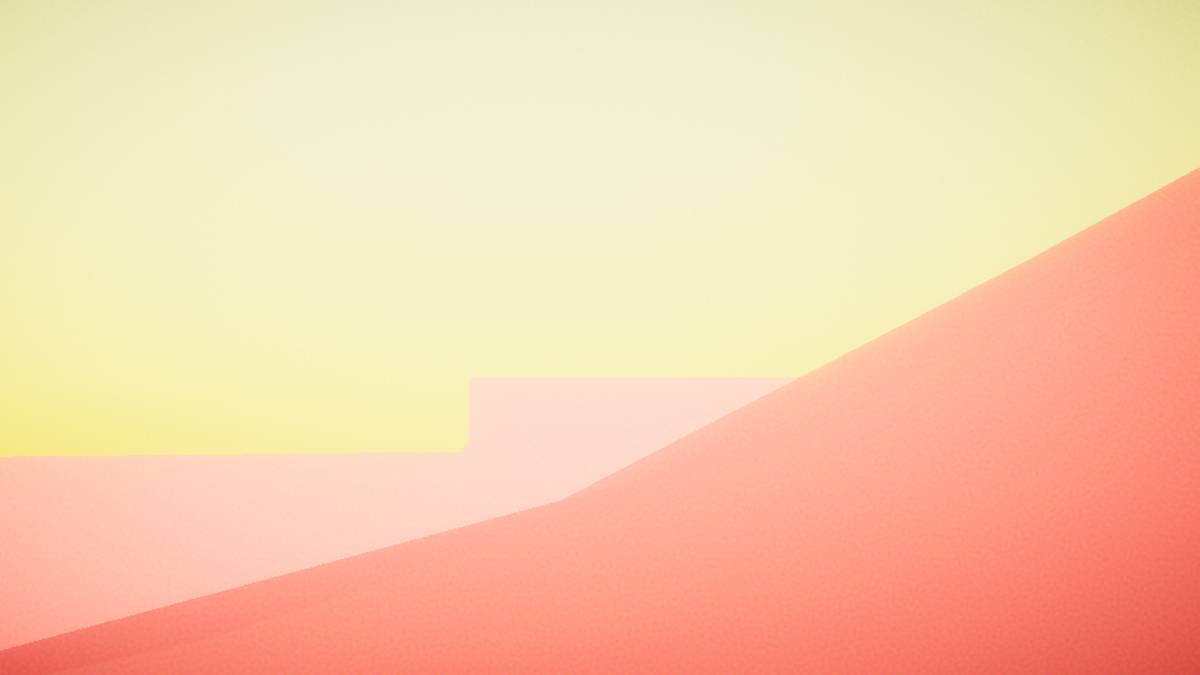
Telephoto lenses zoom in hugely on photographic subjects that are far away, so shaking the camera even the tiniest bit can throw off the whole composition. Likewise, in Umurangi Generation, when you’re trying to take a photo using a telephoto lens, the camera controls get very tricky compared to when you’ve got a different lens attached. The more you zoom in, the bigger and broader any movement of the controls becomes, and it can be very easy to wander away from the composition you’re trying to shoot.
This produces an experience that closely resembles the difficulty felt when using a telephoto lens for real-life photography, and is likely to bring a wry grin to the face of anyone who loves photography, even as they struggle with their frustration. But don’t worry, the game doesn’t also reproduce the infamously severe “camera shake” that tends to result from the real-life strain of lugging around a heavy telephoto lens and using it to take photos.
Wide-angle lenses and the battle against becoming “generic”
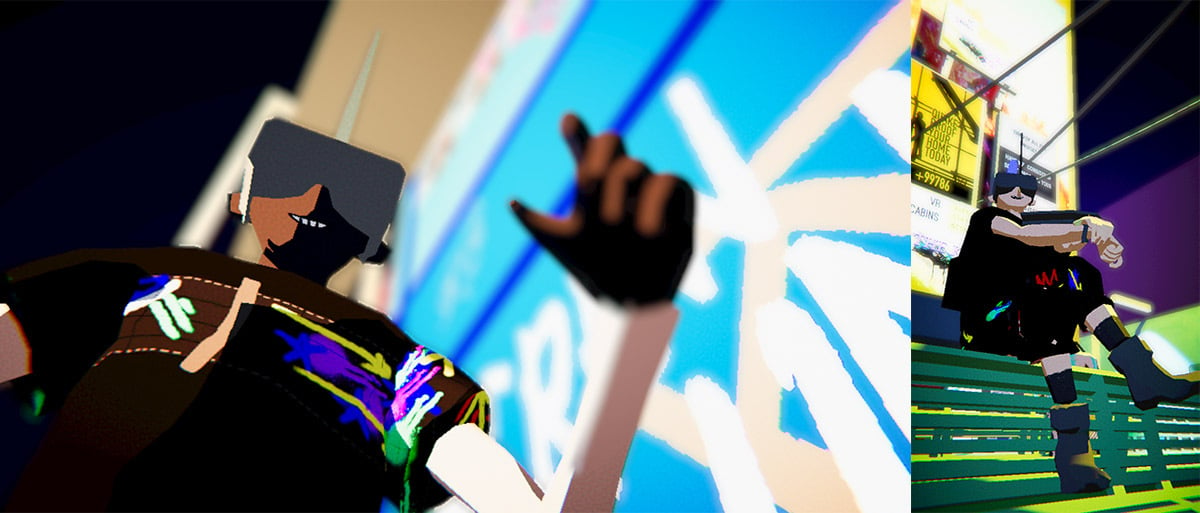
Even when shooting from the same position, you can photograph a broader field of vision with a wide-angle lens than you can with a standard or telephoto lens. Photographing that broader field means that you can fit a lot more things into your photograph. The more random things you cram into your photo, the more likely you are to water down your theme and end up with a very “generic” photograph. (This isn’t something you need to worry about, since the game’s evaluation system will praise pretty much any photograph, but still.)
The game is also set up so that some things aren’t supposed to be photographed. Since the game system requires players to avoid these things when taking photos, you should be able to develop a practical appreciation of the idea of taking photos with a particular goal in mind. It’s an appealing lens that’s perfect for taking photos with a wide scope or focusing properly on a nearby photographic subject, but the fact remains that it can be challenging to use it while keeping track of all the things crowding into your photo.
* Since some typical characteristics aren’t seen in the wide-angle lens that appears in this game, such as the strong sense of perspective and heavy distortion, I’ve left them out of my thoughts here.
Getting lost in development
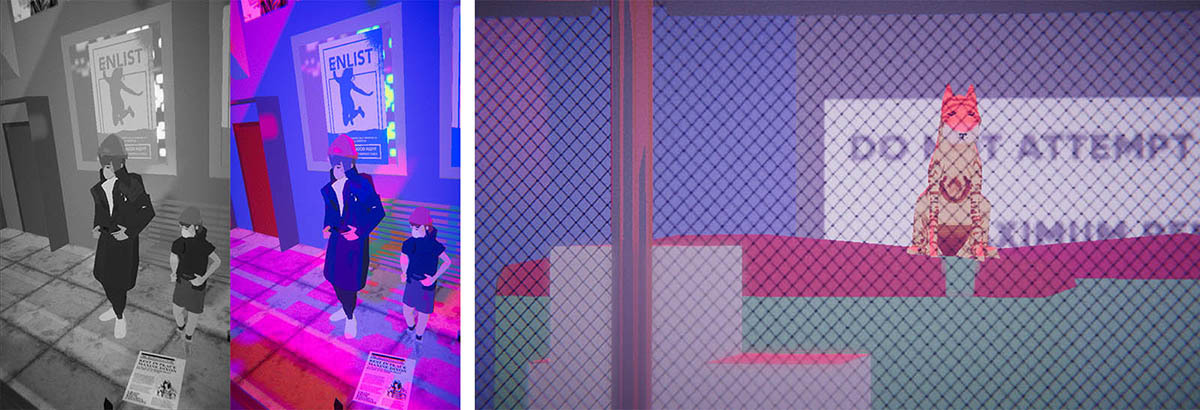
When you click the shutter in this game, it switches to Development Mode, where you can adjust things like the exposure, color temperature, and contrast. Just like digital photo processing in real life, it’s easy to notice new things or wander down a rabbit hole during this process. A shot that felt like a failure can turn out surprisingly well after fiddling around with various parameters, and altering the tint just slightly can change the whole atmosphere of a photograph.
You can play around with drastic movements of the adjustment sliders, or dither endlessly back and forth over the differences you notice when you move them just a tiny bit. Since you can only save one version in your album when you’re finished in Development Mode, only the most carefully cultivated final version will end up in your album every time.
Why we hate (and sometimes love) blinking

When you’re taking photographs of people, one thing you always have to be careful about is your subject closing their eyes. Sometimes you’ll decide on a composition and a pose and snap a photo with what feels like the perfect timing, at the same moment that your subject blinks, and end up with results that are nothing like what you were aiming for. Still, even when things do go off the rails, it’s not always in a bad direction. Having your subject close their eyes can be unexpectedly appealing, or result in a certain je ne sais quoi. Sometimes a work of art is born out of an accident that nobody could have predicted.
The characteristic anxiety of shooting on film

Every time you click the shutter in Umurangi Generation, your remaining exposures decrease by 1, and they increase by 24 every time you find another roll of film. Even when you click the shutter by accident, the game mercilessly subtracts a shot. You can’t just delete unwanted photographs to free up storage space, the way you can with a digital camera.
This mechanism reproduces the characteristic perfectionist anxiety of shooting with a film camera, which rears its head every time you’re about to click the shutter. Plus, for every photo you take, money is deducted for “using film” on the results screen after you clear each stage, so even in the world of Umurangi Generation, film-loving photographers are familiar with the burden of paying for film.
Developing your eye for photography by searching for things
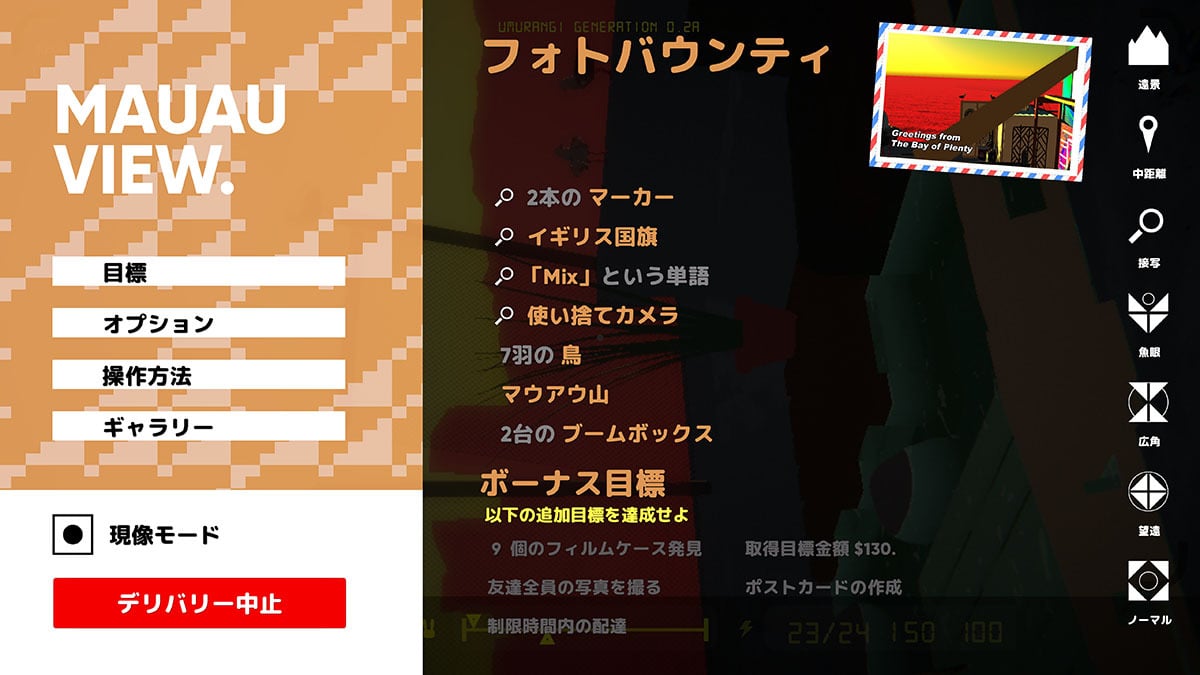
As I mentioned above, if you pick up the canisters of film that are hidden in various stages, your number of exposures will increase. The starting condition of 24 exposures is pretty nerve-wracking, so players end up walking around searching every nook and cranny of the stage for these small, black objects that are sized to fit in the palm of your hand.
This searching process itself sharpens your eyes to notice the special characteristics that certain things possess, and seriously changes the way you look at the world. By putting this to good use (for example, by going on a photo-taking excursion with a theme like “only photograph things that are a particular color”), you can sometimes discover new subjects for your photographs that you would never have noticed before.
As you putter around the stages searching for film in-game, you can make all sorts of discoveries and frequently find yourself thinking, “I didn’t even know this was here!” The game system for increasing your number of exposures by finding film guides the player’s line of sight to things they might otherwise never have noticed, the corners of rooms and the shadows of small objects, and is probably supposed to trigger recognition of new photographic subjects beyond the challenges themselves.
The joy of photography

Finally, the photography in Umurangi Generation is just plain fun. Even when you keep going back to the same places, the joy of creating different pieces according to the mood of the moment and the things that strike your fancy is extremely similar to the joy you might experience while snapping photos during a carefree stroll in real life.
Although each stage has its own pre-determined objectives for you to tackle, you can still have fun just going on a virtual photo-taking excursion, whether you complete those objectives or not. Still, you’ll probably have more fun taking photos in different stages with a certain amount of good equipment, so I do recommend completing the main objectives and making progress through the game first.
This is a slight digression, but the portrait-oriented photographs used in this article weren’t cropped; they were taken by turning the camera by about 90 degrees in-game, and then rotating the image 90 degrees on my computer. There were some situations when I really wanted to take photos in a portrait orientation, and I had to just tilt my head 90 degrees and do my best. I know it would be difficult, since the game screen is in landscape orientation, but I think the scope for fun would expand even more if there was support for portrait-oriented photography.
Umurangi Generation is now available on Steam for US$14.99. Considering the current situation, there are probably a lot of people who actively don’t feel like going out and taking pictures right now. Why not start out by doing some virtual training in a video game, first?


